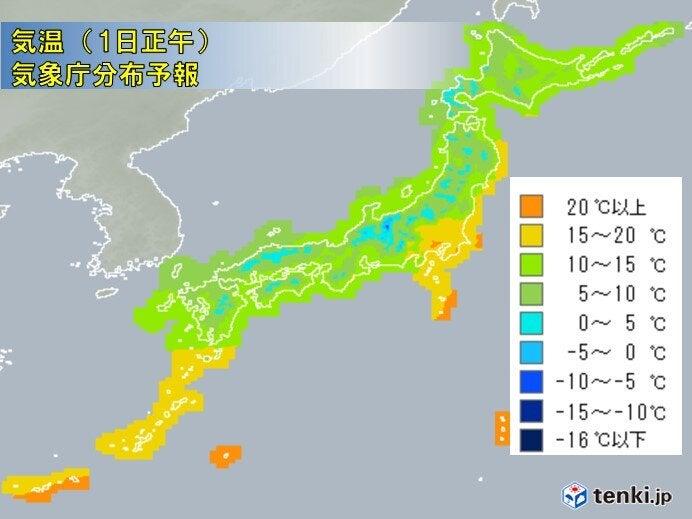Maximum temperature on 20th (Wednesday) Cold north wind Feeling lower than the actual number
Image: tenki.jp

The maximum temperature on the 20th (Wednesday) will be higher than yesterday's 19th (Tuesday), but the wind will be cold. It is said that the sensible temperature drops by 1 ° C for every 1 meter of wind.
20th (Wednesday) Highest temperature in each area
On the 20th (Wednesday), the area around Japan will gradually have a winter-type pressure distribution with high west and low east. A wide and cold north wind is expected to blow. Hokkaido, Tohoku, and Hokuriku will be rainy and thunderstorms. There are many clouds on the Sea of Japan side of Kyushu from Kinki, and it is expected that there will be places where it will rain. Sunlight will reach the Pacific side of Kyushu from Kanto, Tokai, and Kinki. The maximum temperature in Hokkaido is about 10 ° C on the Sea of Japan side, and it is expected that the daytime temperature will be lower than in the morning. On the Pacific Ocean side and the Sea of Okhotsk side, there are many places around 13 ℃. Tohoku and Hokuriku will be around 16 ℃. It is expected that the temperature in Kanto will be around 21 ℃, which will be about 5 ℃ higher than yesterday (Tuesday). It is expected that there are many places around 20 ℃ from Tokai to northern Kyushu. Southern Kyushu will be around 23 ℃. Okinawa is expected to be around 27 ℃.
What is the cold north wind sensible temperature?
It is said that the sensible temperature drops by 1 ° C for every 1 meter of wind. During the day, winds from the north are expected to be wide, about 5 to 6 meters. In southern Hokkaido and Tohoku, there will be places where the wind blows about 10 meters. Nationwide, it seems to feel that the temperature is more than 5 degrees Celsius lower than the actual temperature. For example, in the Kanto region, there is plenty of sunlight, and even if the maximum temperature exceeds 20 degrees Celsius, it is about 15 degrees Celsius. Even when you go out during the day, it's best to wear warm clothes that don't allow air to pass through.
Japan Weather Association Headquarters Keiko Shiraishi
Last updated: tenki.jp